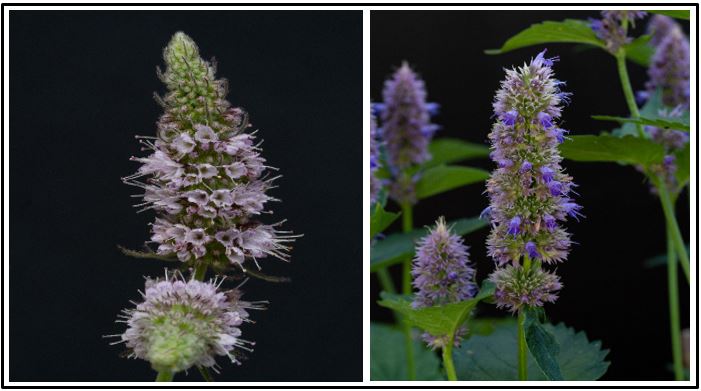Mints (Mentha) - Deathly After Eight
|
Mints are very competitive – where our common Horse Mint (Mentha longifolia) shows up, there will be soon entire patches that push away other plants. Why is that so? We followed this question and found out that Mints due to their scent can suppress germination and growth of other plants. But why is the Mint not suppressing itself? If the scent would be just tocix, the Mint itself should suffer most. It does not, however. We dug deeper and found out that every Mint species produces its own secnt profile. How this profile originates, it not totally clear – our newest research suggest that Nature plays a kind of "chemical LEGO" and combines a handful of enzymes in different ways to produce a variety of quite different scents. What we know already, though, is that the scents are not acting as toxins, but as signals. These signals evoke in the recipient plant a programmed cell death. This is a kind of suicide that can make sense under particular circumstances – when a cell is attached by fungus, it can by this cellular hara-kiri pour defence compounds stored in the vacuole over the intruder. This suicide is triggered by remodelling of the cytoskeleton, a fibrous and very dynamic network inside of all cells. We could show that specific compounds of Mint scents can induce the cytoskeleton to undergo such a remodelling. In other words, the Mint perfumes her competitors and pretends that they were attached by fungi. The neighbouring plants commit collective hara-kiri. The Mint itself seems to ignore its deathly signal. We assume that the receptor, where the signal has to bind, is either missing or manipulated. Basically, the Mind has plugged its nose and cannot smell anything, while her competitors do. Now, we investigate, whether we can render this smart trick useful for us humans to develop novel bioherbicides on base of Mint oil. More in the paper "Ölige Kampfmittel" by Nathalie Hering, who does her PhD on this phenomenon. Chemie unserer Zeit |

